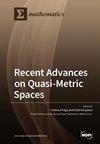二阶 ODE 和 DAE 的条件显式方法系列:多体动力学中的应用
IF 2.3
3区 数学
Q1 MATHEMATICS
引用次数: 0
摘要
二阶常微分方程的数值积分有几种常用程序。最常见的是通过重复变量的数量来降低方程的阶数。这样就可以利用 Runge-Kutta 方法系列或 Adams 多步方法系列。另一种方法是使用已开发的方法,在不增加变量数的情况下直接积分常微分方程。使用 Runge-Kutta 方法的一个重要缺点是,当人们试图将其应用于微分代数方程时,需要降低指数,从而需要使用稳定方法来消除漂移。本文提出了一系列新方法,用于二阶常微分方程的直接积分。这些方法可视为中心差分法的一般化。这些方法根据其考虑的导数数量(度)进行分类。这些方法包括一些参数,可以通过选择这些参数来配置方程的行为。对一些参数集进行了研究,并介绍了一些属于结构动力学和多体动力学的例子。还包括将该方法应用于微分代数方程的示例。本文章由计算机程序翻译,如有差异,请以英文原文为准。
A Family of Conditionally Explicit Methods for Second-Order ODEs and DAEs: Application in Multibody Dynamics
There are several common procedures used to numerically integrate second-order ordinary differential equations. The most common one is to reduce the equation’s order by duplicating the number of variables. This allows one to take advantage of the family of Runge–Kutta methods or the Adams family of multi-step methods. Another approach is the use of methods that have been developed to directly integrate an ordinary differential equation without increasing the number of variables. An important drawback when using Runge–Kutta methods is that when one tries to apply them to differential algebraic equations, they require a reduction in the index, leading to a need for stabilization methods to remove the drift. In this paper, a new family of methods for the direct integration of second-order ordinary differential equations is presented. These methods can be considered as a generalization of the central differences method. The methods are classified according to the number of derivatives they take into account (degree). They include some parameters that can be chosen to configure the equation’s behavior. Some sets of parameters were studied, and some examples belonging to structural dynamics and multibody dynamics are presented. An example of the application of the method to a differential algebraic equation is also included.
求助全文
通过发布文献求助,成功后即可免费获取论文全文。
去求助
来源期刊

Mathematics
Mathematics-General Mathematics
CiteScore
4.00
自引率
16.70%
发文量
4032
审稿时长
21.9 days
期刊介绍:
Mathematics (ISSN 2227-7390) is an international, open access journal which provides an advanced forum for studies related to mathematical sciences. It devotes exclusively to the publication of high-quality reviews, regular research papers and short communications in all areas of pure and applied mathematics. Mathematics also publishes timely and thorough survey articles on current trends, new theoretical techniques, novel ideas and new mathematical tools in different branches of mathematics.
 求助内容:
求助内容: 应助结果提醒方式:
应助结果提醒方式:


